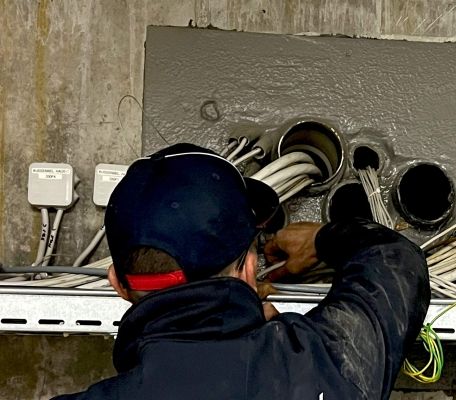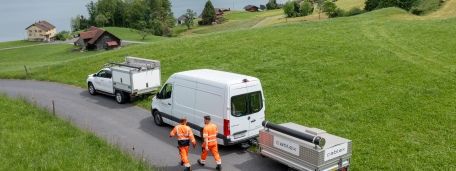
Using an example consultation, we illustrate the key aspects of analysis and recommendation – from investment costs and safety requirements to long-term savings potential.
Customer dialogue: The optimal storage size for your company.
Customer:
I'm planning a photovoltaic system with battery storage for my company. I am considering whether I should invest in a 160 kWh storage system to maximise my self-supply or whether a 100 kWh storage system would make more sense due to the simplified framework conditions. What are the differences and what is the best solution for my needs?
Expert:
These are very legitimate questions. I'll be happy to explain the pros and cons of both systems.
Maximising internal consumption – what are the benefits of a larger storage unit?
Customer:
What specific advantages does a larger storage unit offer me?
Expert:
A 160 kWh storage system offers you the following advantages in particular:
- More stored energy: They can store significantly more surplus solar power. This is particularly useful if your company is aiming for a high level of self-supply and you want to maximise the proportion of self-generated electricity.
- Market options and flexibility: Depending on the provider, larger storage facilities offer the option of feeding surplus energy into the grid or participating in the balancing energy market, which can generate additional revenue under certain conditions.
Technical and structural requirements – a comparison of complexity and costs.
Customer:
What technical and structural requirements do I need to consider?
Expert:
Even smaller storage systems up to 15 kWh are already considered systems with an increased fire risk and should be installed away from escape routes and flammable materials.
- Medium systems up to 100 kWh: Due to their higher energy density, they must be placed in separate fire compartments (e.g. in separate rooms) or outdoors to prevent structural damage.
- Large storage systems from 100 kWh: These can lead to overpressure and uncontrollable fire progression due to the extreme release of energy. They must therefore be secured either outdoors or with extensive protective measures such as pressure relief, sprinkler systems and smoke and heat extraction systems.
- For 160 kWh storage systems:
- Fire protection and safety standards: Due to the high energy density, comprehensive protective measures are necessary or advisable (e.g. extinguishing system, temperature monitoring, smoke detectors). They should be installed outdoors or in a separate building intended exclusively for this purpose with sufficient safety clearance.
- Air conditioning: The increased waste heat may require active cooling and, in colder months, heating, unless the battery system regulates its own temperature.
- Network connection: Depending on the application, larger storage systems must also be connected to the medium-voltage grid in addition to the low-voltage grid. However, this is usually necessary for battery storage systems in the order of 1 MWh.
In addition, the installation of battery storage systems must comply with the safety requirements of the Low Voltage Installation Ordinance (NIV). Other relevant standards include NIN 2020 (SN 411000:2020) and the VKF fire protection leaflet for lithium-ion batteries.

Cost factor – investment versus long-term savings
Customer:
How does the choice of storage size affect my costs?
Expert:
The return on investment of a storage system is basically the difference between the savings from self-supply, the revenue from feeding into the grid, and possible income from the provision of system services.
- 160 kWh storage unit: Higher initial investments are incurred here, as in addition to the system costs, there are also expenses for special fire protection measures, air conditioning and the grid connection. In the long term, however, the investment can pay off in terms of greater self-sufficiency and savings on grid consumption.
- 100 kWh storage unit: This storage system is more cost-efficient, as there are fewer structural and technical requirements. It is particularly suitable for companies with moderate consumption or as an entry-level solution for analysing actual requirements.
Conclusion: 160 kWh or 100 kWh – what is the optimal solution for your company?
Customer:
What memory size do you recommend?
Expert:
That depends on several factors:
- High electricity volume and future planning: If your company has a high level of self-consumption or expects increasing loads in the future, a 160 kWh storage system offers more flexibility. The higher investment can pay for itself through savings and faster amortisation.
- Simple integration and cost-efficient solution: A 100 kWh storage system is easier to install, requires less structural effort, and reduces the initial investment. It is ideal for companies with moderate consumption or for gradual expansion.
Ultimately, you should carefully analyse your consumption data, site conditions and growth plans in order to find the optimum compromise between investment and operating costs.
Advice tailored to your individual needs – practical and economical
Customer:
How can I make an informed decision?
Expert:
Personalised advice helps you to find the optimal solution. Contact us and together we will analyse your needs and develop an economical and technically suitable storage strategy for your company.















